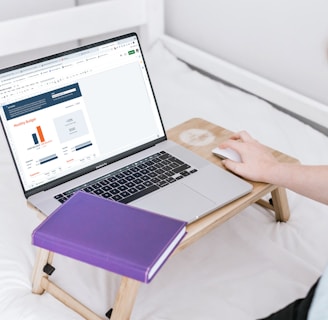How to Create a Budget: Take Control of Your Money with Simply Organised with M.E.
Learn how to create a budget in 6 simple steps with Simply Organised with M.E. Take control of your finances, manage expenses, save for your goals, and reduce money stress. Start budgeting today!


Managing your finances can feel overwhelming, but a budget is your secret weapon to regaining control. It ensures your bills are covered, helps you save for the future, and brings you closer to your financial goals. Whether you’re a budgeting beginner or need to fine-tune your strategy, follow these simple steps to master your money.
Step 1: Know Your Income
Your budget starts with understanding exactly how much money you have coming in. Write down your sources of income and when they arrive. This might include:
Your wages.
Government payments.
Investment income.
Tip: Be as detailed as possible—include amounts, sources, and frequency (e.g., weekly, fortnightly). Knowing your exact income provides a solid foundation for your budget.


Step 2: List Your Expenses
To build a realistic budget, you need to know where your money is going. Identify your essential expenses (your “needs”), such as:
Fixed costs: rent, utilities, groceries, transport, insurance, childcare.
Debt repayments: loans, credit cards, mortgage repayments.
Unexpected costs: car repairs, medical bills, pet expenses.
Use past bank statements or a money-tracking app to calculate these costs accurately. Knowing your outgoings will help you spot areas to cut back and save.
Step 3: Set a Spending Limit
The leftover money after your expenses is for discretionary spending and saving. Plan ahead so you don’t overspend. This category might include:
Hobbies or entertainment.
Dining out or takeaway meals.
Action Step: Allocate specific amounts for these areas and stick to your limits to avoid financial stress.


Step 4: Create a Savings Goal
No budget is complete without a savings plan. Make saving a priority by setting aside money for:
Short-term goals: holidays, gifts, or a new gadget.
Long-term goals: an emergency fund or retirement savings.
Start small if you need to—saving even $20 a week can grow into $1,000+ a year!
Step 5: Review and Adjust Your Budget Regularly
Life is always changing, and so should your budget. Revisit it often and adjust it if:
Your income increases or decreases.
New expenses arise (e.g., medical bills or a new car loan).
You reach a savings milestone or pay off debt
Keeping your budget flexible ensures it always works for your lifestyle.


Step 6: Simplify Your Budget with Automation
Simplify your financial management by using multiple accounts:
Bills Account: Pay fixed costs like rent or utilities.
Spending Account: Cover day-to-day expenses.
Savings Account: Grow your safety net and reach goals.
Set up direct debits for bills and automate savings transfers on payday. This way, your budget runs smoothly with minimal effort.
Why Budgeting Matters
Research by the Australian Securities and Investments Commission (ASIC) shows that 90% of Australians feel more in control when they track their spending. A clear budget reduces financial stress and improves your overall well-being. (Source: ASIC MoneySmart)


Frequently Asked Questions
1. How do I stick to a budget?
Track your expenses regularly, use budgeting apps, and set realistic spending limits to avoid burnout.
2. What’s the 50/30/20 rule?
This popular budgeting method suggests allocating 50% of your income to needs, 30% to wants, and 20% to savings or debt repayment.
3. How much should I save each month?
A good starting point is 20% of your income, but even saving a small amount consistently is beneficial.
4. Should I pay off debt or save money first?
It depends on your situation. Prioritise high-interest debt, but always keep a small emergency fund for unexpected expenses.
5. Can I budget if my income is irregular?
Yes! Base your budget on your minimum expected income and adjust when you earn more.
